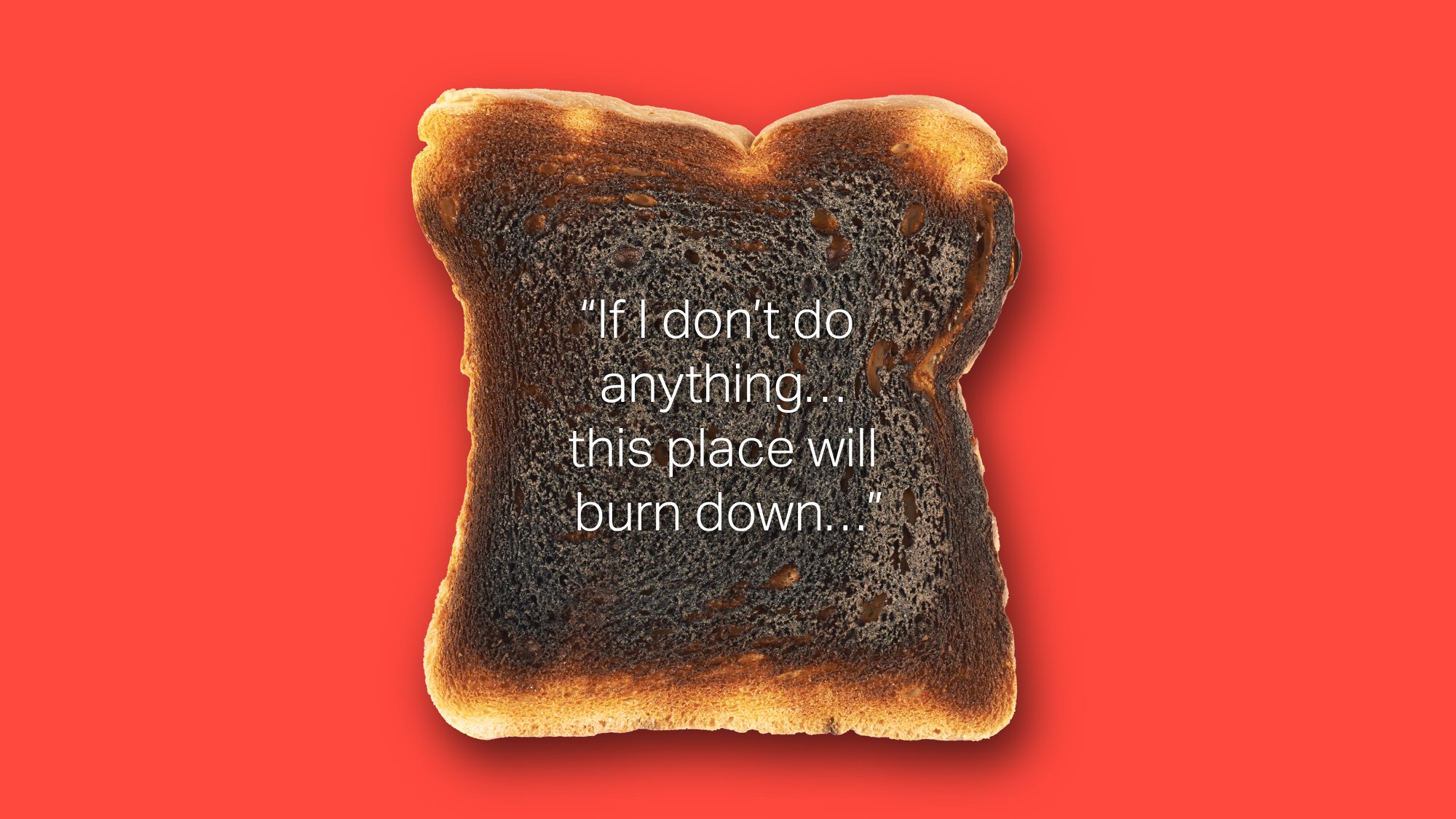Quiet cracking – is something rotten in the state of employee engagement?

We’re experiencing a new wave of workplace disengagement, following on from ‘quiet quitting’ and ‘quiet firing’. It’s called ‘quiet cracking’ and it speaks to employee uncertainty – a lack of job security and managerial support. And it’s harder to recognise than previous iterations.
According to Gallup’s latest survey, just 23% of employees worldwide feel actively engaged in their work.
This might be frustrating to some, especially since employee engagement efforts have been firmly in the zeitgeist in the past decade or so. As our Employee Engagement Director, Cliff Ettridge said in a recent LinkedIn post, “When I started in this industry over 30 years ago, I read the Gallup research saying that only around 30% of employees were engaged. Scandalous, I thought. Let’s change that! Last week, I read a report announcing that only around 23% of employees are engaged. (The number of frontline workers describing themselves as ambitious fell from 36% in 2020 to 30% in 2024.) I’m not sure what we’ve all been doing!”
Engagement metrics globally do seem to be stubborn in shifting. It’s obvious that team building and free fruit in the office just isn’t enough. Especially in a post-COVID, hybrid working, politically and socially disrupted world.
So, leaders, ask yourselves this: Are your employees actually happy, or are they just acting like it?
It’s often easier for employees who feel estranged from their company, team or role to act like they’re enjoying themselves. Rather than say they’re not. Employees who feel disconnected are more likely to put on a brave face than speak to their manager about it.
But despite the nod to Hamlet in the headline, your employee engagement strategy doesn’t have to be a tragedy.
There are actions you can take to make employees feel valued, engaged and open to expressing themselves. This can lead to higher retention and better workplace environments – a win-win for employers.
What we’ll cover:
- The evolution of employee disengagement
- 3 things leadership can do
- The bottom line
The evolution of employee disengagement
We’re in a crisis, and we must act quickly to ensure our employee engagement strategies are working their best. Why? Because without a workforce that feels valued and valuable, there’s no business.
So, how did we get here?
- Quiet quitting – In 2022, thanks to a TikToker, it went viral across the media. It’s the idea, popularised by the younger workforce, that you, as an employee, don’t need to go above and beyond to fulfil your duties. Why? Because your company doesn’t value you as a human being. This came in a post-COVID, economically uncertain period of time. One where people began to feel they were pouring their lives into work and getting little recognition for it. But it didn’t mean quitting completely – it meant finishing tasks, but not going the extra mile.
- Quiet firing – This became popularised in the global narrative shortly after quiet quitting. Again, a symptom of a new working environment where hybrid work has become the norm and connections are harder to find. Quiet firing is when an employer actively disengages with or is hypercritical to their employee, driving them to quit without ever actually asking them to leave.
And now, we need to address the newest notion – quiet cracking – in more detail. What makes quiet cracking different from quiet quitting is that it’s not an active, defiant and empowering choice by employees. As noted in Forbes:
Quiet cracking represents persistent workplace unhappiness that gradually leads to decreased performance, diminished productivity, and resignation.
And all of this can be masked by surface-level positivity. Which begs the question – how can you look out for your employees better so that they look out for you?

3 things leadership can do
Quiet cracking can quickly become an epidemic in your business. Employers must act now and prioritise the happiness and value of their colleagues.
Here’s are 3 ways you can make a start:
Train managers in empathy:
As noted in the 2024 State of Workplace Empathy Report: A Game Plan, “55% of CEOs think they lead [with] empathy at work, but only 28% of employees and 22% of HR share that view.” Every workplace and work culture is different, so first, define what empathy actually means to you. Make sure every manager and every member of the leadership board is in agreement. Then set out a plan on how you will show empathy in general, how it will look in individual cases and circumstances, and how you will work as a team to provide consistent levels of support to everyone across the business. Plan regular reviews, send out surveys and work with the data to make any improvements.
Redesign feedback loops:
Regular check-ins help to show your team that you’re committed and engaged. They also allow for your relationship with your team members to grow. As opposed to a yearly annual review, you will allow your team to ask questions, to shape their understanding, and develop in a more personalised way.
Encourage learning and training:
When employees feel stagnant, disengagement isn’t far behind. A culture of continuous learning sends a powerful message: “We care about your growth, not just your output.” Employers must offer access to development programs, mentorship or even time for personal skill-building. As mentioned in a previous blog by our fantastic producer Kat Anastasiou, volunteering days can help to motivate and nourish employees sense of purpose and curiosity. When people grow, so does their connection to their work.

The bottom line
It takes constant work, reflection and engagement from the entire leadership team to really engage with your employees. Employee engagement means higher retention, better collaboration and a stronger culture. So, it’s important to think about quiet cracking seriously. Ask yourself, is my team really happy or are they pretending to be? How can we work to resolve this?
As Cliff Ettridge says, “I have nine little conversational lines I carry round in my head. They are dead simple. ‘Hello’ is one of them. ‘How are you?’ is another. ‘How might you do it differently?’ is another. All nine lines are tied to the intrinsic motivators that make us want to do good work. But we rarely talk to managers about these simple techniques and how they can use them to motivate their teams. It sounds simple, and it is, it just has to be constant.”
Work is work. Nobody is ever going to go through life experiencing a happy day every day. But as employers, you can help create more happy days, address quiet cracking, and drive business performance.




